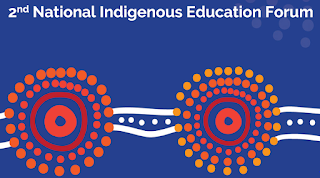Media Release
12 September 2018
National conference
maps the future for Indigenous education
Education leaders from around the country have mapped a
reform pathway to provide Aboriginal and Torres Strait Islander students the
tools they need to navigate through life as part of the 2nd National Indigenous
Education Forum, held in Perth.
More than 30 community and government leaders from around
Australia presented their thoughts and plans for the future of Indigenous
education, with international guest speakers also attending the conference from
New Zealand and Hawaii.
Forum Chair Curtin University’s Elder-in-Residence,
Professor Simon Forrest, said building trust and collaborative relationships
with communities, families and Elders was the key to ensuring successful
indigenous education reform.
Professor Forrest said the forum was working towards a
future where all Indigenous young people gained a full understanding of their
history, enabling them to connect it to their future.
“My vision for the future of Aboriginal and Torres Strait
Islander education is the existence of a situation where healing of the past
takes place daily and our culture is embedded within all aspects of the
curriculum and the education system,” Professor Forrest said.
“My hopes are for an education system where Aboriginal and
Torres Strait Islander students are fully engaged by having our culture
completely embedded in the system, creating an environment that inspires our
students to achieve in all aspects of life.
“I also envisage students, family and the community working
together as the driving force behind the implementation of a culturally
celebratory space that encourages our students to thrive and develop the skills
necessary to successfully navigate both worlds.”
Professor Forrest said the conference delegates were also
encouraged to use the Coolangatta Statement on Indigenous Peoples’ Rights in
Education, which represents a collective voice of Indigenous people from around
the world who support fundamental principles considered vital to achieving
education reform, as a guiding principle to influence the education of
Aboriginal and Torres Strait Islander children.
“Delegates were also encouraged to use the outcomes from the
forum to endeavour to influence change to ensure Indigenous children are
successful at school,” Professor Forrest said.
The 2nd National Indigenous Education Forum was held in
Perth from August 22 to 24.
For more information about the forum, visit here.
Ends…/
Notes to Editor:
Interviews
with Professor Forrest about the 2nd National Indigenous Education Forum are
available.
Media contacts:
Professor
Simon Forrest, Curtin University
Tel: (08) 9266 3130 | Mobile: 0431 659 022 | Email:
S.Forrest@curtin.edu.au








